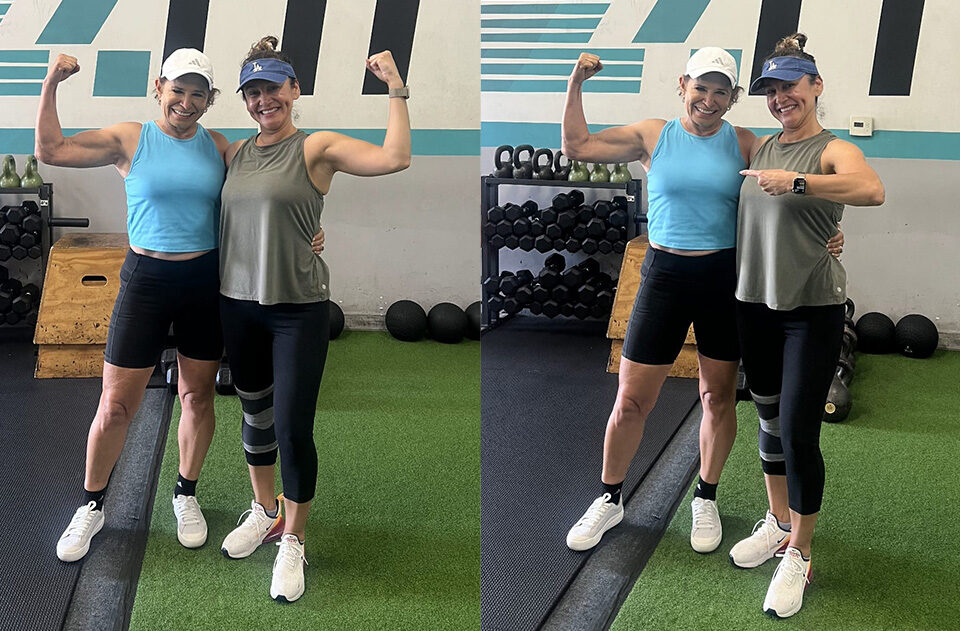The Silent Hormone: Understanding Testosterone’s Role in Women’s Health

In the realm of hormones and their impact on the health of women, the spotlight is often directed toward estrogen and progesterone, leaving a keyplayer in women’s well-being largely ignored and neglected: testosterone. While traditionally associated with men, testosterone has an equally significant role in women’s health. This blog will delve into the reasons why women need testosterone, and the many facets of its influence on various aspects of a woman’s life.
Why Do Women Need Testosterone?
While estrogen and progesterone typically steal the spotlight, testosterone is equally essential for women’s health. It plays a multifaceted role in the female reproductive system, extending beyond its primary association with libido. It has a profound influence on various aspects of reproductive health. Testosterone contributes to sexual desire and arousal, significant elements in maintaining a healthy sexual relationship. Additionally, it is important in regulating follicular development, aiding in the maturation of ovarian follicles, which is essential for ovulation and overall fertility. A balanced testosterone level in women is necessary for sustaining the intricate hormonal balance needed for optimal reproductive function.
In recent years, there is more and more research shedding light on the significance of testosterone in women’s health. For instance, studies have shown that testosterone receptors are present in various tissues, including breast, skin, and adipose (fat) tissue, and the brain indicating its broader impact beyond reproductive functions. Unlike men, who predominantly produce testosterone in their testes. For women ovaries are a primary contributor, but the adrenal glands and peripheral tissues also produce testosterone. Levels of testosterone begin to drop about the age of 35 and accelerate with age.
Cardiovascular Health and Testosterone
Adequate levels of testosterone are also closely associated with maintaining healthy blood pressure and cholesterol levels, both of which play major roles in heart health. When testosterone levels are balanced, it contributes to a well-regulated cardiovascular system, minimizing the risk of heart-related issues.
Testosterone has a role in regulating blood pressure. Imbalances in testosterone levels may disrupt this equilibrium, potentially leading to hypertension, which is a known risk factor for cardiovascular disease.
Proper levels also aid in regulating cholesterol levels, ensuring that the ratio of “good” (HDL) to “bad” (LDL) cholesterol is in a healthy range. An imbalance in testosterone can lead to unfavorable cholesterol profiles, which are associated with a higher risk of atherosclerosis and coronary artery disease in both men and women.
Testosterone and Bone Density
Testosterone is not just about reproductive health; it’s integral to maintaining strong bones and preventing osteoporosis, particularly post-menopause. Decreasing testosterone levels can result in increased bone fragility, emphasizing the need for hormone balance to preserve bone density.
Testosterone is an androgen hormone, which contributes significantly to bone density. As we age, testosterone levels naturally decline, especially following midlife. This decline can lead to a decrease in bone mass, making bones more susceptible to fractures.
Osteoporosis, characterized by reduced bone density, is a pressing concern for post-menopausal women. The hormonal changes accompanying menopause, including declining estrogen and testosterone levels, heighten the risk of bone loss. The link between testosterone and bone density is not just about preventing fractures; it’s about preserving overall mobility and wellbeing. Robust bone health is fundamental for day to day activities.
Effects on Skin and Hair health
Testosterone can also influence several aspects of women’s appearance, with a particular focus on skin and hair. Even though it is present in lower amounts in women than in men, testosterone contributes to regulating sebum production in the skin’s sebaceous glands. The skin needs appropriate sebum production for hydration and health. However, excess levels can result in increased oil production and sebum accumulation in the hair follicles, creating a favorable environment for acne development and clogged pores.
Testosterone also influences hair growth patterns. It is responsible for the development of terminal hair, which is coarser and darker. Imbalances can result in an unwanted increase in terminal hair growth in areas where it’s typically fine or minimal. This condition is known as hirsutism, characterized by excessive and unwanted hair growth, often on the face, chest, or back.
Low Testosterone in Women and Weight Gain
Low testosterone levels in women can also lead to weight gain. Testosterone is a hormone that aids in maintaining muscle mass, strength, and regulating the distribution of body fat. When their levels in women are insufficient, it can result in an increase in body fat, especially around the abdominal area.
The relationship between low testosterone and weight gain is multifaceted. Testosterone is responsible for preserving lean muscle mass, and a reduction in this hormone can lead to muscle loss. With less muscle to burn calories, the body becomes more prone to storing excess calories as fat. Additionally, low testosterone levels may contribute to a slowdown in metabolism, making it easier for women to gain weight and more challenging to lose it.
Testosterone Imbalances
One of the notable conditions associated with hormonal imbalances, particularly elevated testosterone levels, is Polycystic Ovary Syndrome (PCOS). PCOS is a complex hormonal disorder that often involves elevated levels of androgens, including testosterone. The condition is characterized by a range of distressing symptoms, including:
- Menstrual Irregularities: One of the hallmarks of PCOS is irregular menstrual cycles. Hormonal imbalances can disrupt the normal ovulation process, leading to missed or infrequent periods. These irregularities not only affect a woman’s reproductive health but can also result in discomfort and distress.
- Ovarian Cysts: PCOS often leads to the development of small, fluid-filled sacs within the ovaries, known as cysts. These cysts can cause pelvic pain, and they contribute to fertility challenges for women with the condition.
- Symptoms Beyond the Reproductive System: PCOS can have broader implications for a woman’s health, including weight gain, acne, excessive hair growth and even mood disturbances.
Another potential problem with low testosterone levels is the development of Hypoactive Sexual Desire Disorder (HSDD.) It is characterized by a persistent lack of sexual desire and can be influenced by low testosterone levels in some cases. Testosterone contributes to sexual desire and arousal in women, and insufficient levels can lead to a decrease in sexual interest, a core component of HSDD. Physical symptoms, such as vaginal dryness and discomfort, poor ability to climax, emotional impacts like mood disturbances, and potential strain on relationships can all result from low testosterone levels, contributing to the development of HSDD. Diagnosis involves a comprehensive evaluation, and if low testosterone is a factor, hormone replacement therapy (HRT) may be considered to address the imbalance and potentially improve sexual desire. Recognizing the link between low testosterone and HSDD underscores the importance of addressing hormonal imbalances in managing and improving overall well-being.
Symptoms of Low Testosterone in Women
Recognizing the symptoms of low testosterone is vital for early intervention and management. The signs of low testosterone can manifest in various ways, impacting both the physical and emotional aspects of a woman’s health. One common symptom is persistent fatigue, which can significantly affect daily energy levels.
Mood swings, emotional fluctuations, causing increased irritability, anxiety, and even depression are all hallmarks of low testosterone in women
Reduced libido or a diminished interest in sexual activity is also a frequent symptom.
Difficulty in concentration and mental clarity is yet another symptom. Low testosterone can affect cognitive functions, making it challenging for women to focus and remember information.
How Much Testosterone is optimal?
The optimal in women vary individually and over time. On average, women have total testosterone levels ranging from 15 to 70 ng/dL. These reference ranges are not necessarily optimal ranges. These levels are subject to change due to factors like age and menstrual cycle phase. As females age, testosterone levels naturally decline, particularly after menopause. It’s important to consult with your healthcare provider who is experienced in testosterone replacement in women,to determine an ideal range tailored to your individual needs and health conditions.
How to Increase Testosterone in Females
Bioidentical Hormone Replacement Therapy (BHRT) is best.
For women seeking to address testosterone imbalances, it’s important to understand the options for hormone replacement therapy. Testosterone replacement in women can be a complex topic, and it’s essential to have access to comprehensive resources to make informed decisions.
When it comes to testosterone replacement, bio-identical testosterone vs. synthetic testosterone is important to understand. Testosterone that is the same molecular structure as your body makes can have less side effects than a synthetic version. Modes of bioidentical testosterone replacement can be topical creams, intramuscular injections or implanted pellets. Each approach has its benefits and considerations, allowing women to select the most suitable method based on their individual needs and preferences.
BHRT can offer advantages like improved libido, increased energy, and enhanced mood. However, one should note the potential side effects and risks if levels are too high, including acne, hair growth, and the impact on other hormone levels.
Lifestyle Modifications for Hormone Regulation
Beyond BHRT, lifestyle modifications are also needed to naturally regulate testosterone levels in women. Physical activity is key to this process. Strength training and resistance exercises stimulate muscle growth and help contribute to maintaining a healthy body composition. Cardiovascular activities, such as running or swimming, can improve overall fitness and support hormonal balance.
Chronic stress can significantly affect testosterone levels in females. Stress management is another critical component of maintaining stable testosterone levels. Chronic stress can lead to the overproduction of cortisol, a hormone that antagonizes testosterone. Practices such as mindfulness meditation, yoga, and relaxation techniques can help mitigate the effects of stress and ensure hormonal equilibrium. A well-balanced diet, rich in essential nutrients such as zinc and vitamin D, also has a role in supporting healthy testosterone levels.
Additionally, getting adequate sleep is crucial for hormone regulation. Sleep is a period of recovery and hormone production, and insufficient or poor-quality sleep can disrupt this delicate balance. It’s recommended that adults aim for 7-9 hours of quality sleep per night to support hormonal health.
Final Word
It’s time to shine a light on the hidden power of testosterone in women’s health. Testosterone is often overlooked, despite its many roles in many aspects of a woman’s well-being. From sexual and reproductive health, bone density to mental and cardiovascular health, the importance of maintaining balanced testosterone levels in women cannot be overstated. Acknowledging the significance of this hormone and its role in a woman’s life is a big step toward improving her overall health and quality of life.
It is so gratifying to me to see the change in women who have been treated for low testosterone levels, from improved quality of life, to improvement in sexual relationships, better physical response by the body and brain. This is what quality of life means and optimizing testosterone in women is a game changer for them.





